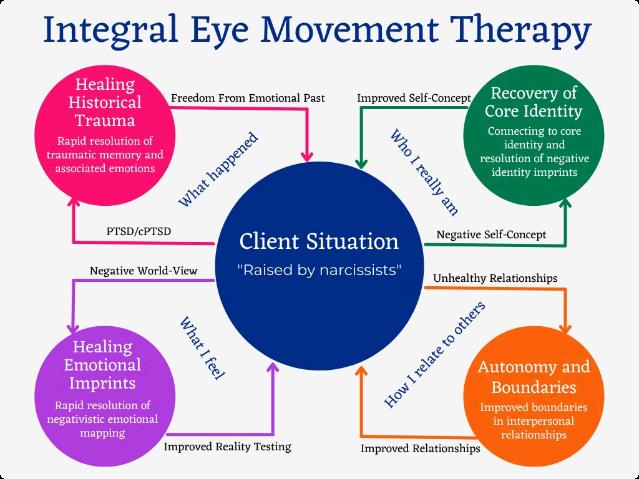

Firefox Counselling


Eye Movement Therapy for PTSD

This presentation explores the effectiveness of eye movement therapy in treating PTSD.

Understanding PTSD and its Impact
Post-traumatic stress disorder (PTSD) is a mental health condition triggered by a terrifying event. PTSD symptoms include intrusive memories, avoidance, negative thoughts and feelings, and heightened arousal.
Emotional Distress
PTSD can cause a wide range of emotions, including anxiety, fear, anger, guilt, and sadness.
2 Cognitive Impairment
Individuals with PTSD may experience difficulty concentrating, remembering details, and making decisions.
3 Social Isolation
PTSD can lead to social withdrawal and difficulty forming close relationships.
4 Physical Symptoms
PTSD can manifest physically with insomnia, fatigue, muscle tension, and headaches.


Principles of Eye Movement Desensitization and Reprocessing (EMDR)
EMDR is a type of psychotherapy that helps people process traumatic memories and reduce PTSD symptoms.
Bilateral Stimulation

EMDR uses alternating stimulation, like eye movements or tapping, to engage both sides of the brain.
Adaptive Information
Processing
This process allows the brain to process and integrate traumatic memories, leading to reduced distress and improved coping.
Trauma-Focused
EMDR therapy is specifically designed to address the emotional and psychological effects of trauma.
How EMDR Works in Treating PTSD
EMDR therapy involves a series of phases that guide individuals through the processing of traumatic memories.
History Taking
The therapist gathers information about the client's past experiences and current symptoms.

2 Preparation
3 Assessment
The therapist identifies the specific traumatic memory that will be targeted in therapy. 4
The therapist helps the client develop coping skills and prepare for the processing of traumatic memories.
Desensitization
5 Installation
The client focuses on the traumatic memory while engaging in bilateral stimulation.
The therapist helps the client develop a positive belief about themselves and the future. 6 Body Scan
The therapist helps the client scan their body for any remaining tension or discomfort.
The therapist helps the client integrate the experience and develop coping mechanisms

Benefits of EMDR Therapy for PTSD
EMDR therapy has been shown to be effective in reducing PTSD symptoms and improving overall well-being.
Reduced Intrusive Thoughts
EMDR can help decrease the frequency and intensity of flashbacks, nightmares, and other intrusive memories.

Increased Self-Esteem
EMDR can help individuals develop a more positive view of themselves and their abilities.
Improved Emotional Regulation
EMDR can help individuals develop better coping mechanisms for managing stress, anxiety, and other emotions.
Improved Social Functioning
EMDR can help individuals overcome social isolation and improve their relationships with others.
Preparing for EMDR Treatment
It's important to find a qualified EMDR therapist and discuss your concerns.



Find a Therapist
Look for a licensed mental health professional who is certified in EMDR therapy.
Initial Consultation
Discuss your symptoms, medical history, and treatment goals with the therapist.

Prepare for Therapy
Develop coping skills and strategies to manage emotional distress before therapy sessions.




The EMDR Therapy Process
EMDR therapy is a structured process that involves multiple sessions and phases.
Phase 1 History Taking and Preparation
Phase 2 Assessment of the Target Memory
Phase 3 Desensitization and Processing
Phase 4 Installation of Positive Beliefs

Phase 5 Body Scan and Closure
Phase 6 Evaluation
Conclusion and Next Steps
EMDR therapy can be a valuable treatment option for PTSD.

Seek Help
If you or someone you know is struggling with PTSD, it's important to seek professional help.

Continue Learning
Stay informed about PTSD and the latest treatments and resources.

Support Systems
Connect with support groups and resources for people who have experienced trauma.



